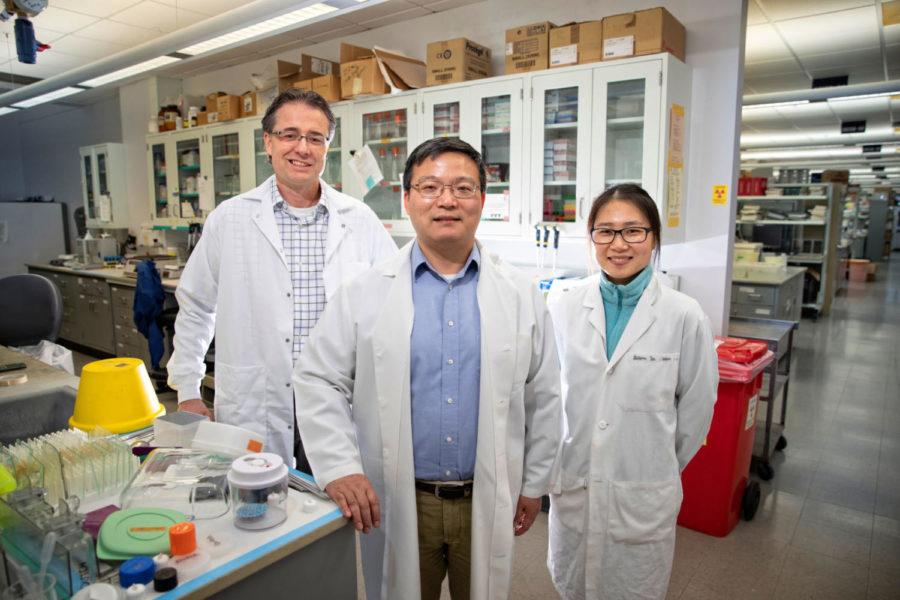UK researcher discovers antibiotics that show signs of curing type of dementia
UK researchers (from left) Matthew Gentry, Haining Zhu, and Lisha Kuang discovered two antibiotics that showed promising signs of curing a form of frontotemporal dementia. Photo by Mark Cornelison | UKphoto
January 21, 2020
A team of UK researchers thinks they may be on the on forefront of developing a treatment for dementia.
The group of scientists recently announced it has found that a class of antibiotics called aminoglycosides could be a promising treatment for frontotemporal dementia.
This team, led by Dr. Haining Zhu, a professor in UK’s Department of Molecular and Cellular Biochemistry, worked in collaboration with the Department of Pathology from the University of California San Francisco. Together, they published a paper outlining their findings in the scientific journal of Human Molecular Genetics earlier this January.
Frontotemporal dementia (FTD) is the most common type of early-onset dementia, an uncommon disease in which people mostly between the ages of 40 and 65 start exhibiting a decline in behavior, personality, decision-making abilities and language, according to the researchers’ announcement.
As the name suggests, FTD affects the frontal and temporal lobes of the brain.
“FTD is quite a devastating disease,” Zhu said.
It is estimated that FTD affects 50,000-60,000 Americans, according to the Association for Frontotemporal Degeneration. While there is no known cure for FTD, Zhu’s team may be paving the way toward such an achievement.
There are two main types of FTD: one that is based on genetic inheritance, and one that is not inherited at all from parents.
Within the genetics-based category, there are multiple different genes at play and a variety of mutations that can bring about the disease.
Zhu’s research deals with a so-called “nonsense mutation” in the gene that encodes the production of a protein called progranulin.
This mutation, also called a premature termination codon (or PTC), causes the protein-making process to end before the protein reaches its full length, making the mutated progranulin non-functional.
This inactivation of progranulin has been linked to FTD, although it is not well-understood outside of this connection.
The antibiotics Zhu and his colleagues found can skip over the mutation, allowing the ribosomes, which make proteins within a cell, to make full-length progranulin as it would normally appear in healthy cells. The process is referred to as “PTC read-through.”
According to Zhu, the discovery stemmed from research conducted by other teams that worked with a similar PTC read-through mechanism in an effort to treat diseases such as cystic fibrosis; this method is currently not well-known otherwise, Zhu said.
From this information, Zhu and his team tested 12 different compounds, and from those, two worked only for FTD and not for another neurodegenerative disease called amyotrophic lateral sclerosis.
These two compounds, called Gentamicin and G418, were shown to recover progranulin levels up to 50-60 percent, according to the study.
Of the two, Gentamicin is already FDA-approved, according to Zhu, but its use has become very limited due to its only forms of administration being through an intravenous infusion or intramuscular injection.
Additionally, Gentamicin has been known to cause various severe side effects, including hearing loss in children given an incorrect dosage and an array of kidney problems.
At this point in the study, there is still a long way to go, but Zhu and his team are set on moving forward with potential plans to make new antibiotics for higher potency with less adverse side effects.
“We [just] don’t have all the pieces in place yet,” Zhu said.
































































































































































